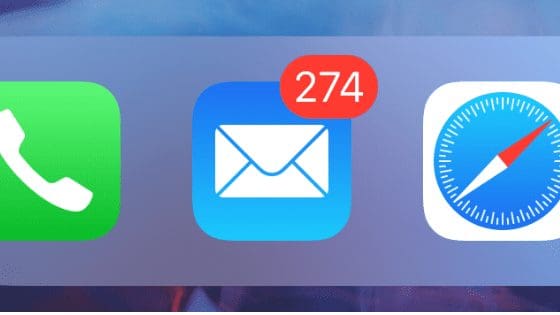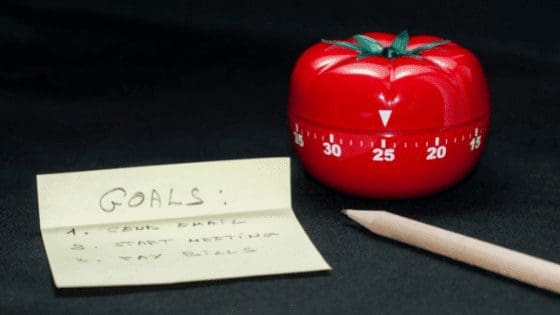It’s there. Winking at you! That little red circle telling you how many unread emails you have in your inbox. The number increases, along with your cortisol levels, every time you look. You open your inbox intent on firing through your emails and banishing that red circle, at least for a short time. But as you do, you’re confronted with all the other emails waiting to be dealt with, and you get that sinking feeling in your tummy. But what if you could get rid of that feeling and achieve inbox zero, or inbox zen as we like to call it?
The guide to achieving Inbox Zero
Getting your email inbox to zero may sound unachievable, and it probably is, unless you intend to spend your entire day dealing with emails!
Every day is the same. You get emails flying into your inbox every few minutes, and the more you respond, the more you get. With the increase of remote working and no longer being able to ‘pop’ over to your colleague’s desk, the daily emails we receive continue to increase. Statista anticipates 333.2 billion emails will be sent in 2022 alone, rising to over 375 billion by 2025.
If you want to make the most of your working hours, be more productive and work smarter, then it might be worth investing some time in getting organised. This will not only help you to achieve inbox zero, or as near as possible to it, but also make sure that you are not wasting time on pointless tasks.
So, are you ready to roll up your sleeves and get started? Good, then lets’ get started with precisely what the concept of ‘Inbox Zero‘ really is.

What is Inbox Zero?
There is a misconception that when we refer to ‘inbox zero‘, it means having no emails in your inbox, but this isn’t entirely accurate. Inbox Zero is an approach to email management that aims to minimise the amount of time your brain is in your inbox.
The Inbox Zero method (created by Merlin Mann) involves processing your email and converting them into action as quickly in the shortest time possible.
Why is the Inbox Zero method worth following?
The Inbox Zero method allows us to eliminate distractions caused by email. Emails are one of the biggest and most common distractions in the workplace, and they can derail our productivity. Studies have shown that it can take us anywhere between 10-20 to regain the same level of focus before we were interrupted. How many times are you interrupted by emails during the day?
Following the Inbox Zero strategies will keep your email inbox as empty as possible and help you avoid the many pitfalls that sap our time and energy when managing our email inbox.
The Inbox Zero method will also clarify where you and your team spend the most time and attention.
In short, Inbox Zero helps improve your time management by reducing distractions, ensuring you are dealing with emails more efficiently, and you can focus on the essential activities that will help you achieve your goals.
And the best part? It’s easy to do. All it takes is a little time now to save you hours in the long run.
How to implement your own inbox zero method
Now you know what Inbox Zero is, it’s time to dive into the 8 strategies to achieve Inbox Zero.

1. Unsubscribe from marketing email lists and newsletters
Remember all those email lists you subscribed to a few years ago? It’s time to unsubscribe from any that are no longer relevant or provide you with information you can put into practice in your working or personal life.
This also applies if you have newsletters or promotional emails coming through. The goal of the Inbox Zero strategy is to declutter as much as possible, so it’s good to start with the subscription lists.
2. Consider merging your emails into one Inbox
If you are juggling multiple inboxes, consider merging them into a single inbox to streamline the process. This prevents you from having to log into and deal with different inboxes.
A caveat to this would be merging your work and personal email addresses. The last thing you want to do is get distracted by the latest holiday offers or fashion trends while working!
3. Set specified times to check your email
By choosing a set number of times to check and action your emails, you will have more time to focus on your workload. Ultimately, this will increase productivity and quality of work overtime.
If you can, we’d recommend checking them twice a day: once in the morning and then again in the afternoon. That’s all you need to get your inbox to zero.
If you’re expected to monitor your emails more closely or have shorter service level agreements to stick to, you may need to check your emails more regularly than twice a day.

4. Turn off your email notifications
You might wonder how turning off your notifications will help achieve inbox zero. Although it won’t reduce the emails in your inbox, it prevents you from being distracted by every ping, ping or ting. Ensure you manage your email inbox and not allow it to control you!
If you need to action emails quickly, check what other tools are available to you to help make this work. Depending on your email provider, you may be able to set up rules which ensure you receive notifications for particular emails rather than being disturbed by every one that lands in your inbox.
5. Organise messages into folders and use filters, tags, and labels
To get your inbox to zero, create separate folders in your inbox to keep your emails organised. Not only do they keep your inbox clear, but it also makes it easy to find them should you need to do so.
You can further speed up the organisation process using rules, filters, tags and labels. Rather than sorting emails manually one by one, use automation to save you time. For example, set up rules to automatically send newsletters to a ‘Newsletter’ or ‘Reading’ folder as soon as it lands in your inbox. You can then go to that folder and peruse them at your leisure at a time that suits your calendar.
You can find a guide on Gmail filters here, and if you’re an Outlook user, you can find out more here.
6. Only handle a message once
One of the most significant time stealers when it comes to your inbox is touching your emails more than once. How many times have you opened an email to see what it is and thought, “I’ll come back to that later.”? When we do this, there is a duplication of time and effort, which we can easily eradicate by only handling each email once.
Commit to actioning each email you open when you first look at it. Step 7 will help you to do this.

7. The 4 Ds of inbox zero: Delete, Do, Delegate or Defer
Your emails should fall into one of these four categories:
Delete – If the email doesn’t require any action by you or anyone else, delete or archive it immediately. If it’s a newsletter or marketing email you don’t need, and you’ve not yet unsubscribed from, make sure you do that as well.
Delegate – Can the action required be dealt with by someone else? You may have people in your team who are better equipped to action the email. If so, forward the email to the relevant person. Then, either delete or achieve the email. If it’s something you need to keep an eye on, schedule a time to review.
Do – If the email requires action from you, and you can do it within the next 3 to 5 minutes, do it! Get it out of the way and out of your email inbox.
If the email requires action from you, but it’s going to take some time that you don’t currently have available, defer it.
Defer – These emails either don’t fit in any of the above boxes or require additional action from you. In which case, reschedule them.
The types of emails you might reschedule include:
- Emails that would take some time to respond, in which case you can schedule that time out in your diary.
- You may need to investigate something before you can respond. If this is the case, you may want to send a quick response explaining the action you need to take and when you can get back to them, ensure they don’t send further emails chasing you.
- Matters you need to follow up on a different day.
If you choose to defer an email, it is good practice to put it in a separate folder, make use of follow up reminders and label it, so you know instantly what action is required. Remember, it isn’t just about reducing the number of emails in your inbox. It’s about lowering the thinking time you spend on them.
8. Set up and customise automatic responses
Utilising automatic responses for your emails can also help save you a lot of time. If people know you are out of the office or you only access your emails twice a day, you manage expectations regarding response times, resulting in fewer people chasing you.
You can also use these automatic responses to refer people to colleagues or sources of information to enable the matter to be dealt with.
These are some strategies you can implement to help you spend less time in your inbox and spend more time on the activities you enjoy. It is unlikely that you will fully achieve inbox zero due to the number of emails we receive, but applying these strategies can make your email inbox a nicer place to be.
Have a go at implementing these steps, and let us know how you get on. If you’re still struggling with managing your inbox productivity, book your free discovery call to discuss how we can help.
Published 2nd August 2022




